In recent years, there has been an explosion in the popularity of ‘pedal platform’ amps.
Part of this has come as a result of the ever expanding guitar pedal market – which now offers a huge range of choice across a variety of different budgets.
However, it is also because pedal platform amps offer guitarists a number of key benefits. In my opinion this is particularly true for blues guitarists, who face a variety of unique challenges in their goal of recreating the tones of their blues guitar heroes.
In this article then, I will cover the following:
- The meaning of the phrase ‘pedal platform amp’
- Some of the most significant benefits of pedal platform amps for blues guitarists
- 15 brilliant pedal platform amps across different price ranges
- Features and considerations to take into account when buying one of these amps
With that in mind then, let’s get into it!
An introduction to pedal platform amps
As the name suggests, pedal platform amps provide an effective platform for guitar pedals. This means that they ‘take’ pedals well and allow you to get the most from the pedal(s) that you are using.
In this kind of setup, you are typically not relying on your amp for the majority of your tones, and instead are using pedals to craft your sound.
This does not mean that your amp is of secondary importance in this kind of setup. In fact, it is absolutely crucial.
To provide an effective platform for pedals, amps typically need to possess two key characteristics, which are as follows:
Firstly, they need to have beautiful and crisp clean tones. These provide the foundation on which you can then layer additional sounds and textures.
Additionally, these kind of amps need to have sufficient headroom. This means that you can increase their volume without causing them to overdrive. In this way, you can add pedals into the mix without getting a heavily overdriven or muddy sound.
In my opinion then, when we talk about pedal platform amps, we are really talking about an approach to gear. This is an approach in which players either favour a clean tone, or a lower gain tone in which the clarity of each note is preserved.
It is for this reason that guitarists like Stevie Ray Vaughan, John Mayer, and Kenny Wayne Shepherd adopted and continue to adopt this approach.
Whilst each of these guitarists have songs in which they play with a higher gain tone, for the most part they are playing with a clean tone or a lower gain tone.
You can hear an example of the former on tracks like ‘Gravity‘ by John Mayer, ‘While We Cry‘ by Kenny Wayne Shepherd and ‘Life Without You‘ by Stevie Ray Vaughan.
Conversely, in songs like ‘Slow Dancing In A Burning Room‘, ‘Dark Side Of Love‘ and ‘Testify‘ by the same players, you can hear them each use a more broken up tone. Yet whilst their tones are overdriven, they still sound crisp and articulate.
Benefits of pedal platform amps
If you are a fan of the guitarists listed above, then targeting the same approach will help you to get closer to their setup and tone.
Even if these particular players don’t resonate with you however, it might still be worth considering the same approach for your own setup.
This is because pedal platform amps provide a number of further benefits, regardless of whether or not you like John Mayer and Stevie Ray Vaughan. Let’s look at these in a bit more detail:
Volume
The first of these benefits is that pedals allow you to create beautiful overdriven tones at lower volumes. This is significant, as volume is a perennial challenge for blues guitarists trying to recreate the tones of their heroes.
Most classic blues guitarists didn’t use guitar pedals. They simply played loud and cranked their amps to a level at which the amps started to overdrive. Doing this created wonderful results, and is responsible for some of the most celebrated blues guitar tones of all time.
The challenge is that this approach relies on playing at a volume which is unrealistic for most guitarists, apart from those gigging in large venues or playing in home studios without neighbours or other people to disturb. As such, relying on just your amp for overdrive can be difficult.
Conversely, using a pedal platform amp and then using pedals to craft your overdrive tones can help you to create a similar tone, but at neighbour friendly volumes.
Variety
Pedal platform amps can also give you more control over your tone.
If you use your amp to provide the core of your tone, it will limit the kind of tones that you can create.
For example, in his early career Eric Clapton paired Gibson guitars with Marshall amps, and cranked those amps to push them into overdrive. His tone on those records is arguably one of the most celebrated of all time.
However, as a modern player it is likely that you have a range of tones that you want to create. You might want to sound like Eric Clapton in Cream, but also B.B. King, Jimi Hendrix and Eric Johnson.
Without pedals, it is impossible to create such a broad spectrum of tones. Whilst you could go and buy different amps for different tones, doing so would be both expensive and impractical.
As such, opting for a pedal platform amp which allows you to get the most out of your pedals makes sense.
It can provide you with a blank canvas on which you can then craft many different tones, and it allows you to do this practically and more economically (provided you don’t go too crazy on the pedals!)
Vintage tones
As you will see when we go through the list, most pedal platform amps are based on vintage amps from the 1950s and ’60s.
In this way, opting for a pedal platform amp ensures you choose the right kind of amp for vintage blues tones.
This is not to be taken for granted. With so many different amps out there, it is easy for guitarists to end up buying a more modern style amp that is ill suited for vintage blues tones.
The majority of pedal platform amps out there are based on the amps of early blues players. As such, looking at amps of this kind will help to put you into the right tonal ballpark.
Now that I have hopefully convinced you of the benefits of pedal platform amps, we can (almost) turn our attention to 15 different options for you to consider. First though, I think it is worth covering a few opening points, which are as follows:
Price
Firstly, the majority of amps in this list are in a higher price bracket.
This is intentional. For whilst there are cheaper amps out there that ‘take’ pedals effectively (the Fender Blues Junior IV is a great example), when I think about pedal platform amps, I usually think about those that move beyond entry level options.
There are two reasons for this:
The first of these is that a big benefit of pedal platform amps is that they have beautiful clean tones. In my experience and belief, this comes at a cost.
Whilst paying more does not guarantee better tone, up to a point I do believe there is a strong correlation between the clarity and depth of tone an amp produces and it’s price.
In other words, the clean tone of a $2000 amp will be noticeably crisper, deeper and richer than that of one which costs $500.
The second is that there is a certain level of cost built into the approach of using a pedal platform amp. As noted above, one of the benefits of this kind of setup is that you don’t have to buy a lot of amps to craft different tones.
You do however need to buy different pedals.
Whilst you can go for cheaper pedals, if you are looking to recreate the tones of players who adopt this kind of setup, it is likely that you will want to go for boutique pedals.
As such, it is worth going into this process with your eyes open and recognising that if you want to make it work, you might have to spend a bit more.
Features
Secondly and significantly, it is important to note that whilst I have broadly categorised the amps in this article as being pedal platform amps, they are not the same and have different features.
I have noted some of these below when referring to each amp. However if you are seriously looking to buy a pedal platform amp, I would recommend doing a little research beyond the information provided here.
This will ensure that you choose the amp best suited to your needs. Specifically, when weighing up different options I would recommend considering the following options:
- The wattage and size of the amp
- The type of tubes in the amp
- Whether the amp has features like built-in reverb or tremolo
- The kind of speaker(s) in the amp
- If the amp has a master volume or built-in attenuator
- Whether or not the amp has an effects loop
These factors will dictate the overall tone and voicing of the amp, as well as how suitable it is for your specific playing context.
For example, if you are constrained with the volume at which you can play, a master volume or attenuator is a very important feature.
Conversely, if sparkling clean tones are important to you, opting for a more powerful amp with more headroom might make more sense.
Analysing some of these elements will ensure that you choose the best option for your specific playing context and needs.
Options
Finally, it is worth mentioning that this list is not exhaustive. To cover every possible pedal platform amp out there would make for a tediously long list and probably wouldn’t be particularly useful.
As such, I have tried to create a list of amps here which are readily available and in a price range that is not beyond the realm of possibility for most players.
However if I have excluded an amp or brand that is particularly close to your heart, please do let me know in the comments below!
Now with that final caveat out of the way, let’s get into it. Here are 15 pedal platform amps that will help you dial in a range of killer blues tones:
Fender ’68 Custom Deluxe Reverb
Since Leo Fender first started creating guitar amps in the 1940s, Fender amps have been associated with both crisp and clear clean tones and beautiful vintage overdrive tones.
As such, the majority of amps in their range could help you dial in singing clean tones, whilst effectively acting as a pedal platform amp.
Having said that, I believe that the Fender ’68 Custom Deluxe Reverb stands out in their collection as a particularly suitable option.
There are a variety of reasons for this:
Unlike many Fender amps, the Custom Deluxe is a two channel amp. The first of these channels is based on the original Custom Deluxe, whilst the second is based on a modified Fender Bassman.
The first channel is designed to give you beautiful and clean sparkling Fender tones, whilst the second is aimed at bringing vintage overdrive tones to the table.
This second channel was also designed specifically with pedals in mind.
Fender built the circuit to make it more responsive and dynamic, and also to start overdriving at lower levels. In this way, you can pair the overdrive from your pedals with the overdrive from the amp to create a rich overdrive tone.
Regardless of which channel you opt for, the amp includes both reverb and vibrato.
At the time of writing the amp is $1499/ £1150, making it one of the cheaper pedal platform amps in this list.
Mesa Boogie California Tweed
Mesa Boogie have a reputation for creating high gain amps, which often come with a wide number of different switches, voicings and EQ options. As such, they might not be the first company to spring to mind when you are looking for a clean sounding pedal platform amp.
With the California Tweed however, Boogie have aspired to create an authentic Tweed style amp with a single channel and beautiful clean tones.
The distinguishing feature of this amp is its power switching. This allows you switch between playing at either 2, 10, 20, 30 or 40 watts, which is significant for two reasons.
The first of these is that it allows you to use the amp at lower volumes, which is great if you are doing most of your playing at home and have to be mindful of your overall volume.
The second is that in each position the amp will have more or less headroom.
The former is suitable if you are looking for very crisp and clean tones, whilst the latter works well if you want to dial in a more overdriven tone – particularly with the aid of pedals.
At the time of writing, the California Tweed is $2499/ £1900.
CeriaTone SSS 50
Dumble amps are widely recognised as some of the best amps ever built.
It is perhaps little surprise then that they were (and continue to be) the amps of choice for many of the most famous guitarists of all time – including all of the players that were mentioned at the beginning of this article.
It is perhaps also little surprise that various companies have set out to clone the original Dumble amps. One of these companies is CeriaTone – who’s mission is to offer affordable versions of a variety of classic amplifiers. This includes the SSS 50:
As the name suggests, this is based on the original Dumble Steel String Singer. In fact, it is modelled to authentically replicate the original, and so has the same FET drive, along with the bright, deep and rock/jazz toggle switches.
The Steel String Singer was made famous as the amp of choice for Stevie Ray Vaughan and later John Mayer, both of whom combined the amp effectively with pedals. So if you are looking to recreate the tones of those players, this could be a brilliant option.
Pictured above is the head version of the amp, which costs just $ 1830/£1400 at the time of writing -making it far cheaper than many of the other Dumble clones out there.
Should you be interested in a combo version of the same amp, CeriaTone offer one for $1880/£1440.
Tone King Imperial MK II
Over the last 20 years, Tone King have established themselves as one of the leading boutique amp manufacturers, appealing to both professional and amateur musicians alike.
Although they have a variety of amps in their collection, the Imperial MK II is their flagship model:
Like the Fender ’68 Deluxe, the amp has two channels.
As you might expect, the rhythm channel is designed with clean and crisp American tones in mind, whilst the lead channel is designed to help you dial in heavier vintage style Tweed tones.
With both channels you have the option to add reverb and tremolo.
The distinguishing feature of the Imperial MK II – and in fact of all Tone King amps – is the built-in Ironman II attenuator.
This feature is significant, as it allows you to create overdrive within your amp at low volumes. So if you are doing most of your playing at home and need to be mindful of volume, this amp could be a great addition to your rig.
At the time of writing, the Imperial MK II costs $2695/£2050. It also comes in a variety of different colours, including bright turquoise!
Victory V40 Duchess
Pedal platform amps are typically modelled on either Dumble style amps, or early Fender amps from the 1950s and ’60s.
As such, most pedal platform amps – including those in this list – are based on a clean, American style sound.
With their V40 Duchess however, British amp company Victory have adopted an alternative approach – creating an amp that targets both American and British style tones:
The amp is single channel, however has a ‘voice switch’. This allows you to alternate between an American voicing with a relatively flat frequency response and one with a much stronger mid-range focus.
This voice switch is combined with a ‘mid-kick’ switch which allows you to dial in even more mid-range and push your amp into overdrive. When combined with pedals, this gives you a variety of options for creating both vintage and modern blues tones.
Additionally, the Duchess has a master volume control, vintage style reverb and tremolo and an effects loop. This last feature is significant, as it is not a standard feature for most vintage style amps.
Of all of the amps in this list, this one is close to my heart. For the last 2 years I have played the now discontinued Victory Viscount, which shares many similarities with the Duchess.
I use this for all of the courses inside The Blues Club, and combine it with pedals to craft a wide range of different tones. The clean tones are beautiful and it provides the perfect platform for pedals.
So if you are looking for a highly versatile pedal platform amp that can help you to dial in both vintage and modern tones, the Duchess would make an excellent choice.
At the time of writing, the amp is $2499/£1950 and is available as either a combo or a head.
Magnatone Twilighter
Following their resurrection in 2013, Magnatone have established themselves as one of the most highly respected builders of boutique amplifiers.
This is due in no small part to their popularity with a number of famous blues and blues rock guitarists, including most notably, Jeff Beck and Billy Gibbons.
As is true of many of the amps in this list, the Magnatone Twilighter is based on a classic American sound. So it has beautiful, sparkling clean tones and provides a brilliant platform for pedals.
Arguably the distinguishing feature of the amp though, is its vibrato and tremolo.
When Magnatone amps first became popular with musicians like Buddy Holly and Lonnie Mack in the 1950s, it was largely as a result of the pitch shifting vibrato, which was revolutionary at the time and remains celebrated to this day for its quality.
If this – in addition to tremolo and reverb are important to you – then Magnatone offer a two speaker, stereo version of the amp called the Magnatone Twilighter Stereo.
In this amp, the vibrato and tremolo pan across the two speakers for ‘three dimensional guitar tone’. This more expensive version of the amp also allows you to run different wet and dry combinations across the speakers.
The stereo version of the Twilighter currently costs $4599/£3600, whilst the single speaker version costs $3499/£2700.
Supro 1968RK Keeley
As noted above, pedal platform amps are typically associated with American style clean tones.
This however, is not true of the Surpo 1968RK. The amp has a distinctly British voicing, with a more pronounced mid-range.
This mid-range is typically associated with higher gain tones. It is for this reason that British voiced amps are often celebrated for the quality of their overdriven, rather than their clean tones.
That does not mean however, that they can’t create beautiful clean tones or provide a platform for pedals.
Additionally, out all of the amps in this list, the Supro 1968RK is the only one to have been designed in collaboration with a pedal maker.
Robert Keeley – the founder of Keeley Electronics – worked with Supro to design an amp with sparkling British clean tones, that would also work as a platform for pedals.
As a result, the amp has increased headroom and a custom speaker designed for balanced tones.
Unlike the majority of the amps in this list, the Supro 1968RK does not have reverb or tremolo. However it does have an effects loop – allowing you to add your own modulation effects.
As a final and significant point, at a current price of $1199/£950, the Supro 1968RK is one of the cheapest amps in this list, and offers great value for money.
VHT D-Fifty
Like CeriaTone, VHT is a company that seeks to provide Dumble style amps at an affordable price range.
This might seem straightforward – however given that Dumbles are amongst some of the most respected and celebrated boutique amplifiers ever built – it is no easy feat.
Unlike the CeriaTone listed above, the VHT D-50 is based on the Dumble Overdrive Special.
The Overdrive Special is the Dumble of choice for players like Joe Bonamassa, Robben Ford and Sonny Landreth, amongst others.
John Mayer has also used the ODS at various points in his career, and it would seem that with their D-Fifty, VHT are appealing to guitarists looking for Mayer style tones on a budget.
This is made evident by the various sound clips and demos on their site, most of which are based around some variation of Mayer’s ‘Slow Dancing In A Burning Room‘.
As such, if you are a fan of Mayer and of the other guitarists listed above, the VHT-Fifty could make a wonderful addition to your rig.
Like the original ODS, the amp has three different switches for ‘bright, mid and jazz/rock’. It also has an overdrive knob and a master volume.
In this way it offers a lot of different options for tone tweaking, before you even start to combine it with pedals.
It also does all of this at a very reasonable price. At the time of writing the head is just $1050/£825.
Milkman Creamer
If you are a big fan of John Mayer, Dumble style amps are not the only options for you to consider.
In 2014, Mayer gave Milkman Sound amps a huge amount of exposure when he shared a post on Instagram endorsing their 85 watt Pedal Steel amp, describing it as ‘one of the best new guitar amps (he) had heard in a long time’.
I appreciate that Mayer is somewhat of a polarising figure amongst blues fans. Yet even if you are not a fan of Mayer’s music, it is difficult to argue against the quality of his tone and the versatility of tones he is able to create using pedal platform amps and a range of pedals.
So if you are looking for similar tones (whether or not you want to launch into a rendition of Mayer’s ‘Gravity‘!) a Milkman amp could make a great addition to your rig.
For home and studio based players looking for a pedal platform amp, the Milkman Sound Creamer would make a great choice:
As with many of the amps in this list, the Milkman Creamer has a simple set of controls and includes both tremolo and reverb.
All of the Milkman amps are hand built and made to order, with some scope for customising your amp for your needs. Specifically, you can choose between a Jupiter Large Ceramic 12″ speaker, a Jupiter Alnico 12″ speaker and a Jupiter Alnico 12″ speaker.
This is significant, as each of these speakers gives the amp a different character and they all break up in different ways.
For example, the large ceramic speaker won’t start to break up at the same volume as the Jupiter Alnico speaker. The Jupiter Alnico also has a more mid-range focused sound, giving the amp quite a different voicing.
In this way then, you can alter the design of the amp to suit your requirements and the specific tones that you are looking to create.
Being hand built with only the highest quality components, Milkman amps sit in a higher price bracket. At the time of writing the combo costs $3449/£2700.
Rivera Amps Venus Deux Recording
According to Rivera, their Venus Deux Recording model is the ‘best tube amp for pedals’.
It has been specifically designed for players who want to use pedals to craft their tones, with a lot of emphasis placed on headroom to provide a clean foundation for pedals.
The Venus Deux Recording moves beyond a simple clean foundation though, and provides a number of tone tweaking options.
This includes a treble ‘pull bright’ switch and a middle ‘pull notch’ – both of which allow you to alter the character of your clean tone.
As the name of the amp suggests, it is also intended for those interested in recording. So on the rear panel of the amp there are a whole variety of features to help make home recording easier.
This includes a 6 voiced reactive load speaker, an internal load switch for silent recording and a NO EQ line out so you can use the amp with cabinet modelling software.
If you are a vintage amp enthusiast, then these features might put you off. However if you are looking for a pedal platform amp which also has a range of modern features, this could be a great option.
There are two versions of the amp – one at 55 watts and the other at 25 watts. At the time of writing, the former costs $2199/£1700, and the latter $2099/£1650.
Two Rock Traditional Clean
No list on pedal platform amps would be complete without the inclusion of Two-Rock.
Two-Rock amps originally took inspiration from early Fender amps from the 1950s and ’60s. Yet whilst this element is present in their amp designs, Two-Rock amps have since come to be characterised by their own unique features.
Specifically, the brand is associated with high wattage, powerful amps that are very dynamic, touch sensitive, and which provide a brilliant platform for pedals.
It is for this reason that Two-Rock amps have proved and continue to be so popular with a range of blues players celebrated for their beautiful tones. This includes Eric Johnson, John Mayer, Matt Schofield, Joey Landreth and Doyle Bramhall II, amongst others.
The Traditional Clean is available as either a 100W head or a 40w combo. In both cases though, there are power scaling options which allow you to reduce that to either 50w or 20w, respectively.
The Traditional Clean also has a master volume control, allowing you to use the amp both at home and in live settings where you need more power.
Two-Rock amps are boutique, handmade amps and so are in a higher price bracket. At the time of writing, the head version of the Traditional Clean costs around $5500/£4300.
Suhr Hombre
Suhr are perhaps better associated with high end guitars than they are with amplifiers. Yet despite this, they offer a range of boutique amplifiers, a number of which are based on classic amps from the 1950s and ’60s.
Of these, the Suhr Hombre is a brilliant option if you are looking for a pedal platform amp.
The approach that Suhr take to amp building is similar to the way they design guitars.
They take the classic features that make these guitars and amps so popular, and then combine them with more modern elements to offer a different and hopefully improved playing experience.
With the Hombre then, Suhr have designed an amp based on the classic sounds of Fender brownface amps. So like the Fender Deluxe G63, the Hombre has two channels – normal and bright – along with tremolo.
This means that you can create a significant amount of drive in the amp itself. In turn this allows you to mix the sound of the overdrive within the amp, alongside your drive pedals.
This gives you the ability to create a variety of rich and warm overdrive tones, and the option to dial in heavier overdrive tones, should you so wish.
At the time of writing, the Suhr Hombre costs $2450/£1900.
PRS DG Custom
Most boutique pedal platform amps are modelled on famous vintage amps from the past. This is evident from this list, where many of the amps are built to replicate either classic Fender or Dumble style amps.
This is to be expected. Those classic amps were used to record many of the most famous blues songs of all time. As such, it is only natural that modern builders would use these amps as the starting point for their designs.
If you are looking to recreate these famous tones, then it makes sense to consider these options too. However if you are looking for a pedal platform amp that has its own distinct sound, you might want to consider the PRS DG Custom:
PRS built the amp in collaboration with the killer blues guitarist David Grissom.
The amp is not a clone of any classic amp, but does have many of the characteristics required for an effective pedal platform amp.
It is highly dynamic and touch sensitive, and with the inclusion of a bright switch and master volume, allows you to dial in tones across a wide gain range.
If you are a fan of PRS guitars and their meticulous approach to developing on the legacy of classic instruments with something quite different, then this could make a great option for your setup.
At the time of writing, the head costs $3600/£2800.
Cornell Romany
Since their creation in the early 1990s, Cornell amps have built a reputation for building very high quality, vintage style amps. These have been used by a number of notable blues and rock guitarists, including Eric Clapton, Gary Moore and Noel Gallagher.
Cornell offer amps in a range of different styles – building upon the designs of classic Marshall and Fender amps.
If you are looking for a pedal platform amp however, I would recommend opting for the Cornell Romany.
This is based on the classic Fender Tweed amps developed between the late 1940s and 1960s. It has a simple set of controls, including EQ and reverb.
The key modern feature on the amp is the inclusion of a built-in attenuator which has four options and allows you to play at 0.05W, 0.25W, 1.5W and 10W.
At 10 watts, the Romany is much lower wattage compared to many of the amps in the list. This is a real bonus if you are predominantly playing at home at lower volumes, as the amp will start to overdrive at a lower volume.
In this way, you can stack your pedals into an already overdriving amp to create a beautiful and rich overdrive tone.
At the time of writing, the Cornell Romany 12 costs $2100/£1645.
Matchless Laurel Canyon
Matchless are widely recognised as the brand that kick started the boutique amp craze of the 1990s.
Since then, they have remained one of the most eminent boutique amp brands, with models like their DC-30 being used by players including Billy Gibbons, Joe Perry and Jimmie Vaughan, amongst countless others.
When it comes to pedal platform amps, one of the best options within the Matchless range is the Laurel Canyon.
Unlike almost all of the amps within the Matchless range, the Laurel Canyon is an American voiced amplifier. In fact, it was the first amp in the history of the company to be built using 6V6 tubes.
These give the amp a distinct American voicing, and deliver the crisp and clean tones and soft drive reminiscent of players from the 1960s.
Compared with some of the amps in this list, the amp’s control panel is very simple – with just a 3 way EQ, reverb and master volume.
So if you are looking for a simple, high quality American style amp that offers a departure from classic Fender models, the Laurel Canyon could be a great addition to your rig.
At the time of writing, the Laurel Canyon costs $2350/£1850.
References
YouTube, Telecaster Discussion Page, Premier Guitar, Guitar Player, Wikipedia, Gear News, Guitar World, Midwood Guitar Studio, Magnatone, PRS Forums
Links
Many of the links embedded in this article are affiliate links. As such, if you buy one of the pieces of gear I recommend, or an item from the same store after clicking one of these links, I will earn a small commission.
I never recommend pieces of gear that I wouldn’t use myself, and I include these affiliate links to ensure that I can keep this content free. If you have any questions, please feel free to reach out to me on aidan@happybluesman.com.

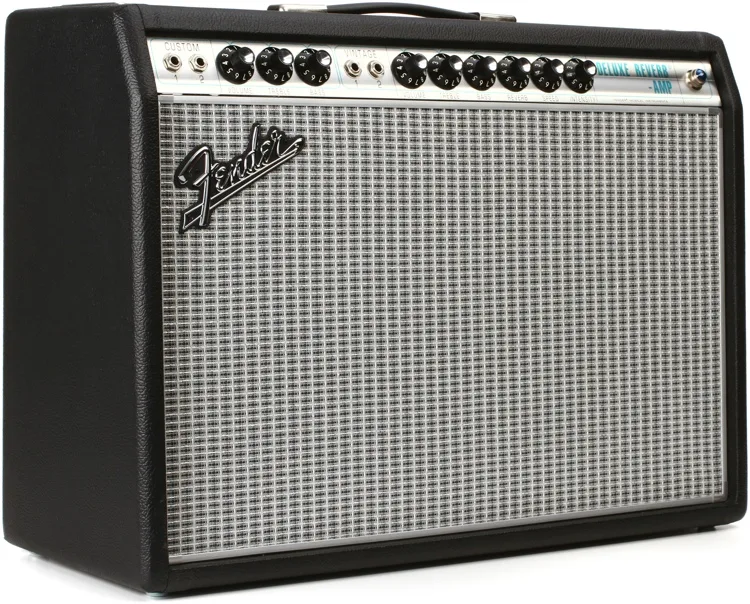
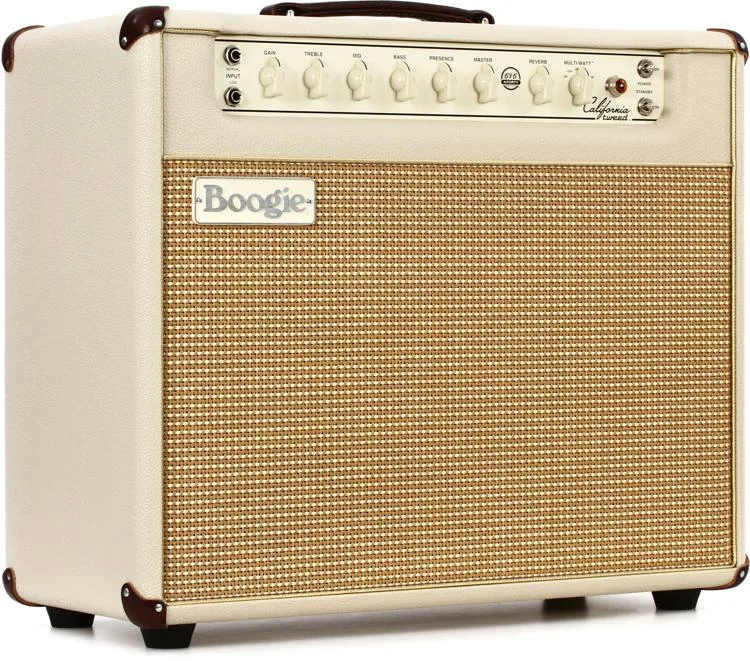

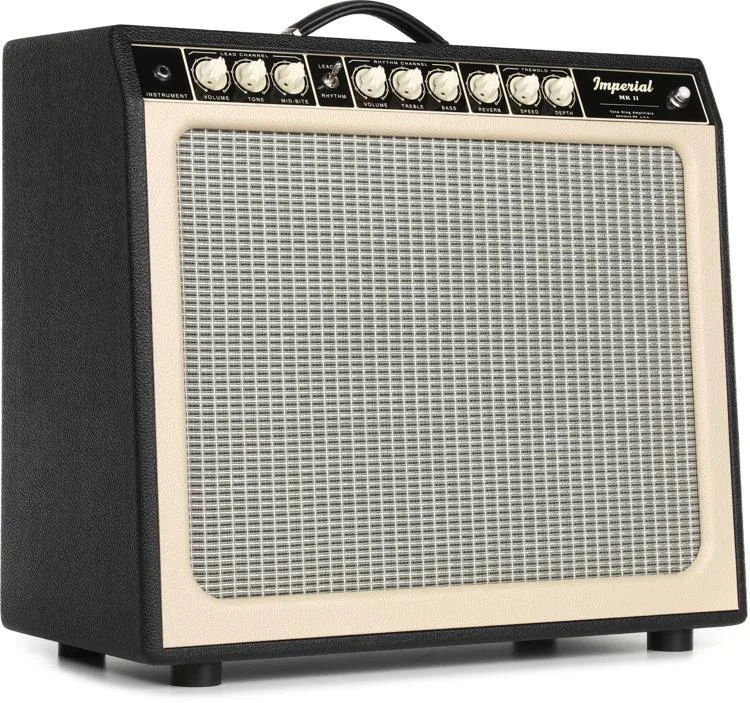
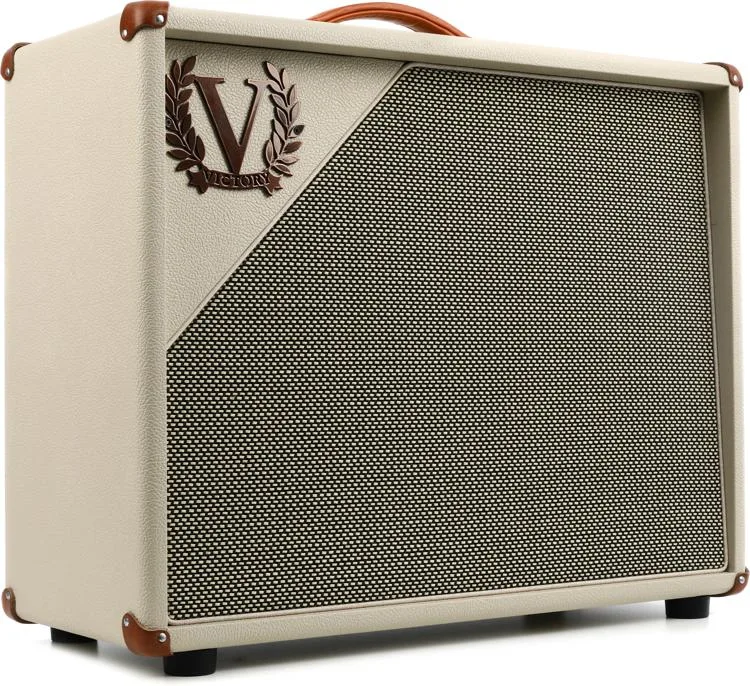
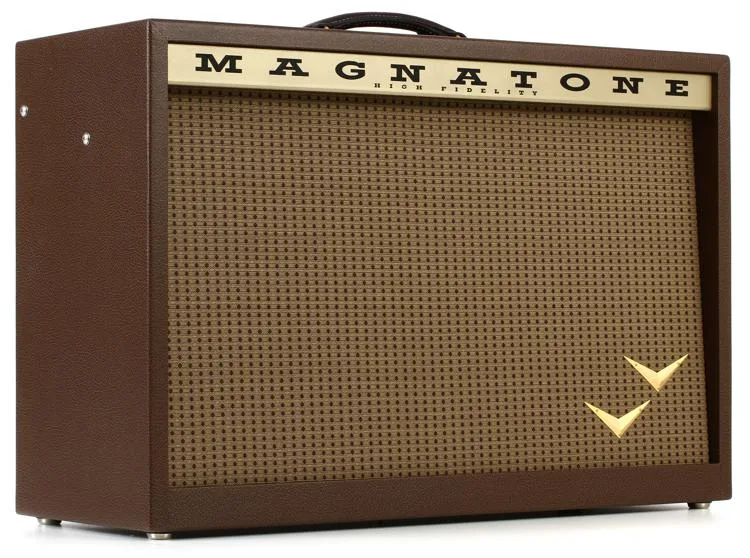

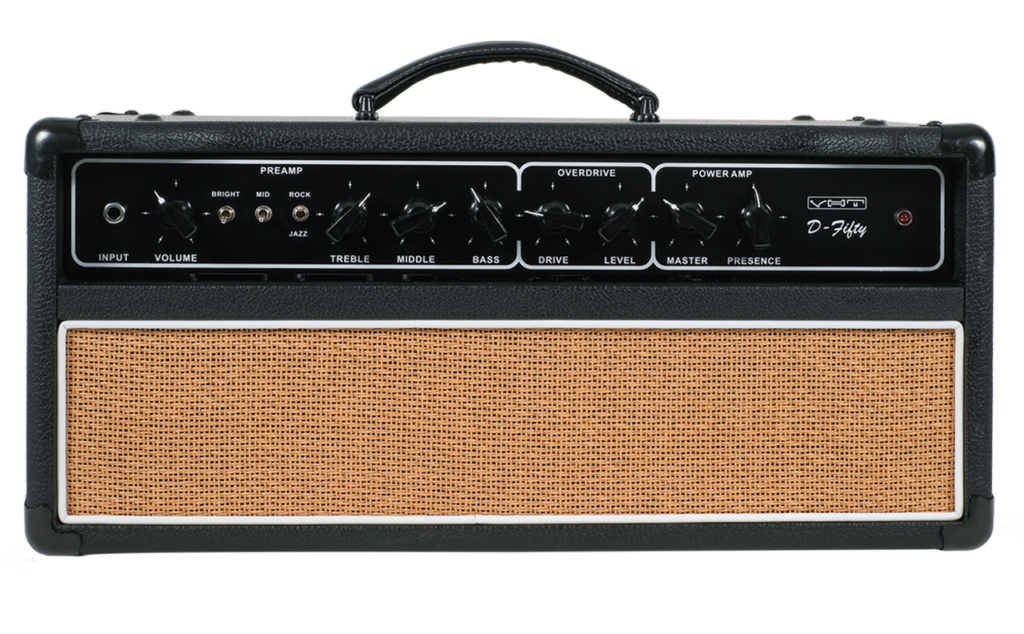
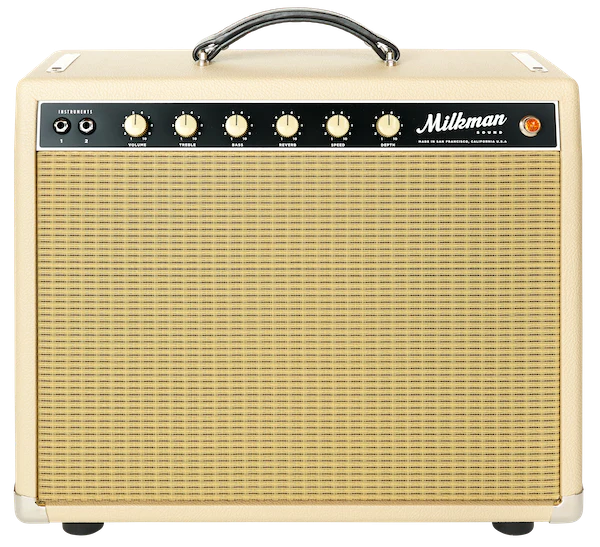
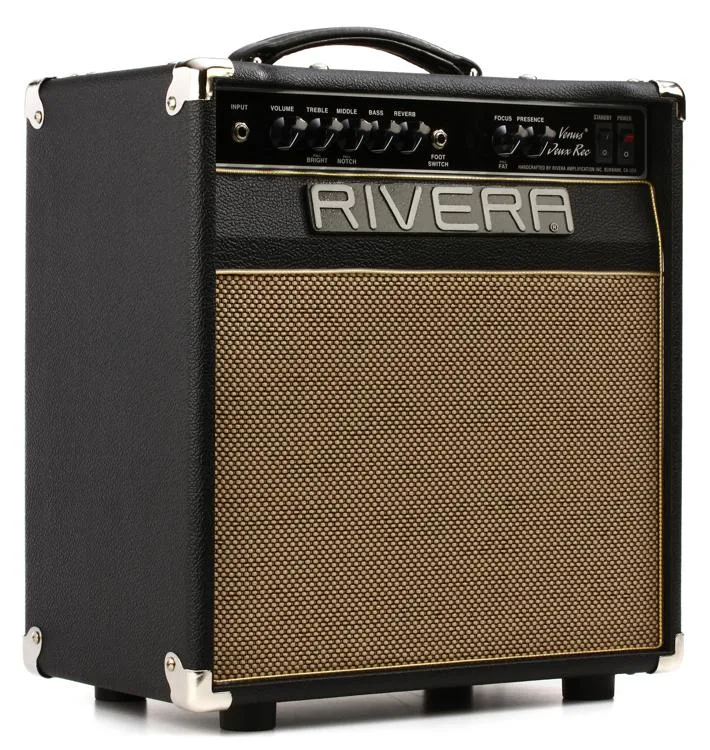
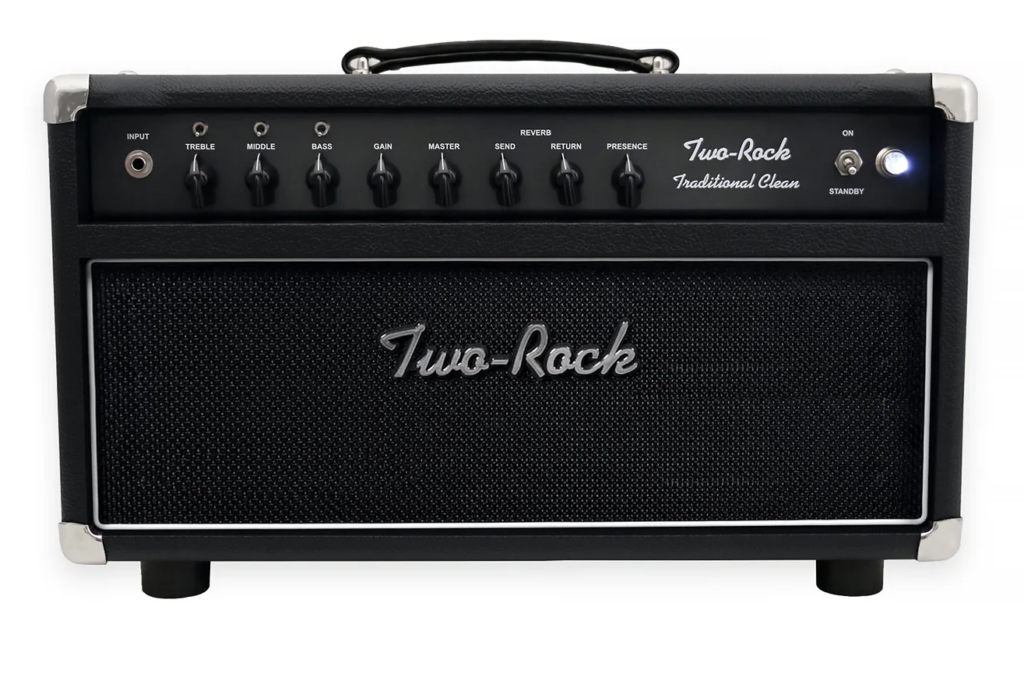
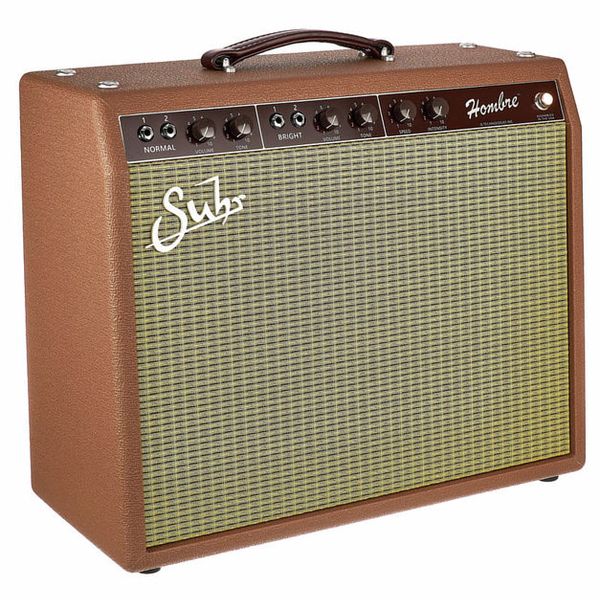
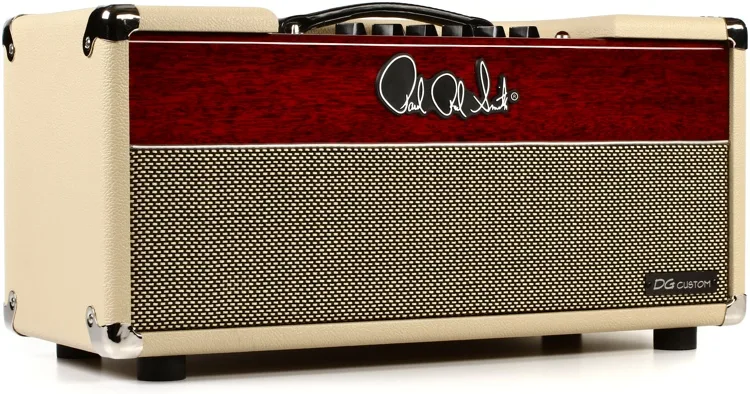
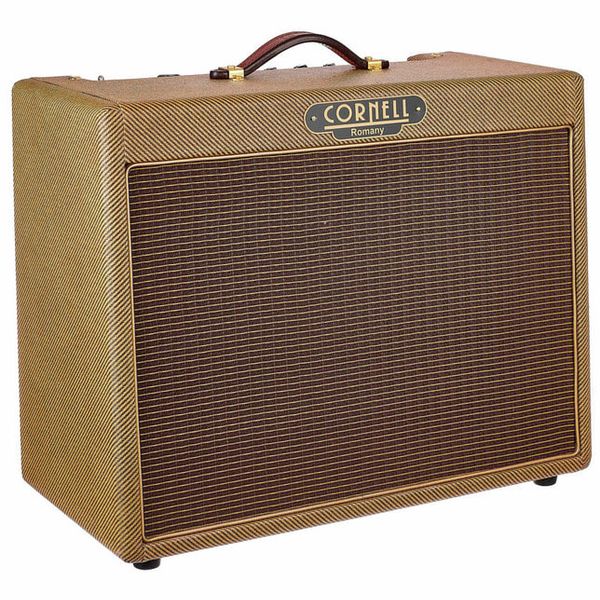
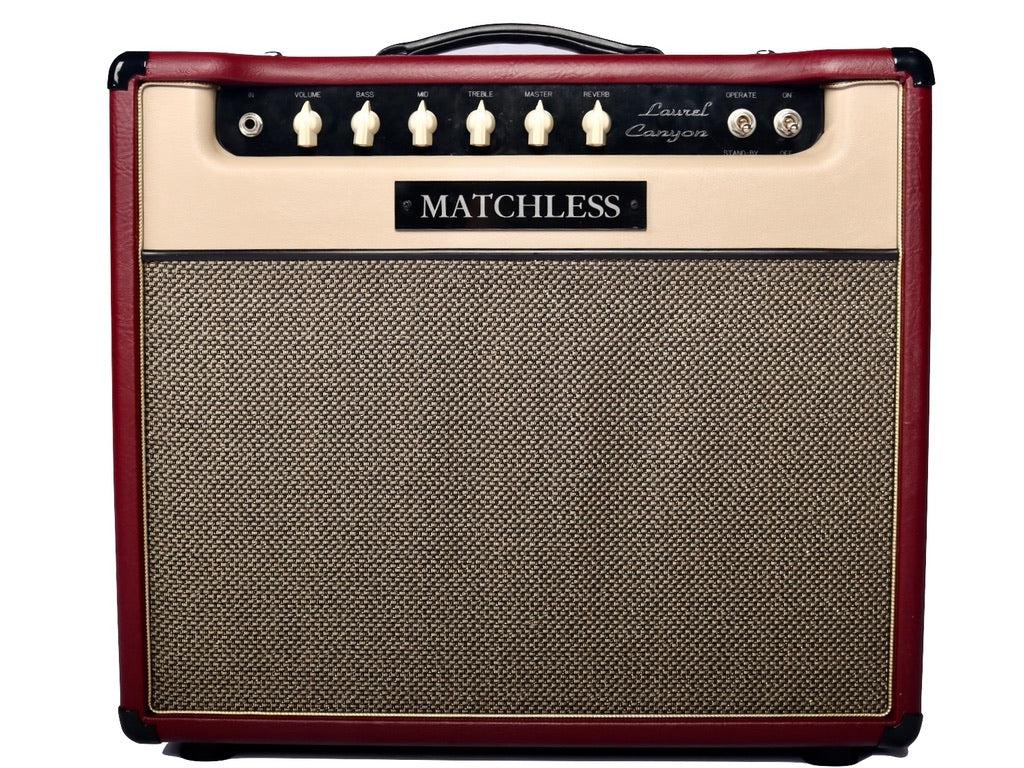




Responses